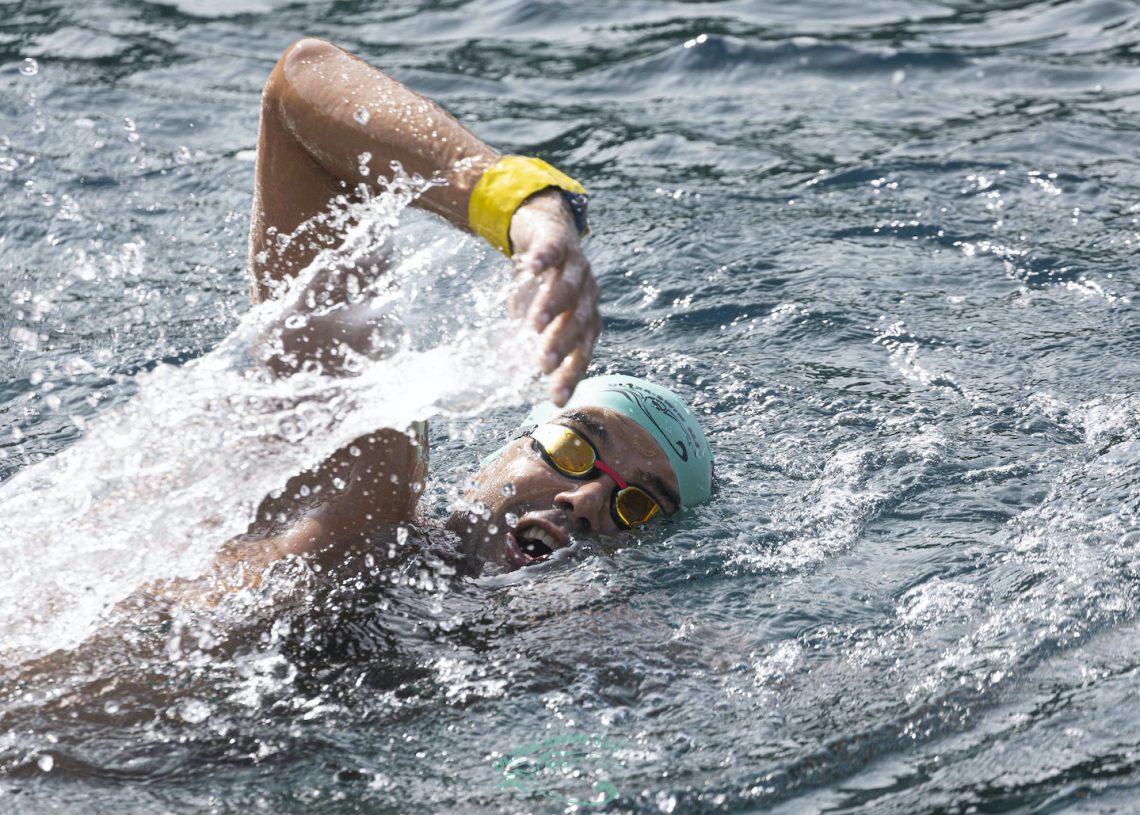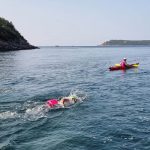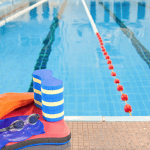
Freestyle Refresher Course Part 5: Putting it all together
Body position and balance, breathing, arms and legs – How to pull it all together
Over the previous four issues, we’ve looked at the various components of front crawl: body position and balance; breathing; arms; and legs. Now we will explore how to pull it all together. Front crawl is so much better when all the parts work as a cohesive, coordinated whole.
We’ve touched on this previously. For example, we looked at the timing of the kick. You could have your feet and arms each doing their own thing but this wouldn’t be effective. It works much better if the power phase of the arm pull coincides with kick of the same foot, which also drives body rotation.
If you talk to swimmers, you’ll find that many don’t know what their legs are doing, even if they’re kicking perfectly. They’ll say that kicking just happens or it’s instinctive. But if you ask them to think about or modify their kick, they struggle and become uncoordinated. And sometimes, even though kicking feels natural, it may not be optimised. It can take the experienced eye of a good coach to spot this. However, one principle of this refresher series is to help diagnose areas for improvement in your own swimming.
Personally, I find it difficult to follow what my feet are doing if I’m using a six-beat kick. Try first with a two-beat kick, which is much easier to track. If this is still tricky, slow the stroke down by doing catch-up or swimming with one arm at a time (see drills, below). Don’t despair if you can’t do this at your first attempt. It took me several weeks of practice. Once you are confident of your timing with a two-beat, switch to six-beat but only focus on the most powerful of those, which coincides with when you kick in two-beat timing. Then link the timing of the kick to the rocking of your hips, moving smoothly from one side of your body to the other.
Get a rhythm
Closely linked to timing, is rhythm. Rhythm helps give your swimming purpose, momentum and power. You may find your stroke has a natural rhythm, or it may be something you have to develop. One way to do this is through a mantra you repeat (in your head) in time to your stroke. For bilateral breathers, I like one suggested by Paul Newsome of Swim Smooth: “Bubble, bubble, breathe”. This also reminds you to breathe out while your face is in the water.
Or take the advice from Indiana Jones’ friend and expert frogman, Renaldo, in The Dial of Destiny, who says: “reach and pull, reach and pull”. Or make up your own, perhaps linked to a stroke focus point you’re working on, or just count.
Cadence
The two things that determine how fast you swim are the distance you cover with each stroke and your stroke rate. If you move your arms faster, you will go through the water faster, provided you cover the same distance with each stroke. Alternatively, if you keep your stroke rate the same but increase the distance you cover with each stroke, you will also go faster. The problem is, it’s hard to improve one of these variables without impacting the other. Trying to lengthen your stroke usually slows it down. You can test this by using a swimming metronome (eg, Finis Tempo Trainer). Swim repeats of a fixed distance. Use the metronome to guide your stroke rate and gradually increase the rate.
Count your strokes, time your swims and keep track of your effort levels. If you plot the results on a graph, you should find your optimum stroke rate range. As you won’t always swim with a metronome, get to know what this feels like or try linking it to your mantra.
While you can force yourself to cover more distance per stroke by, for example, kicking harder, gliding or changing the timing, this is usually counterproductive. Long-term improvements come through better technique and streamlining. Those are the areas that deserve most of your focus. However, it is worth separately practising both swimming with a longer stroke and a faster one, and then trying to combine the two.
Be patient
Improving your swimming and embedding new, good habits will take many hours of deliberate practice. Drills and exercises can be a useful way to focus your attention – see below for some suggestions. You will, I’m sure, get frustrated at times. Keep track of progress by occasionally timing yourself over a fixed distance (eg, 400m) or entering races.
Pool races are more reliable for tracking progress, as the distances and conditions are controlled. However, open water swims are more accessible. Just keep in mind that conditions will affect your swim.
Regularly self-review the various components of your swimming stroke and keep iterating and refining your technique, especially if progress is eluding you. The more you practise sensing and controlling your stroke, the easier it becomes to make future changes. Remember that every stroke you take is an opportunity to improve your swimming – or it’s an opportunity to embed a technique flaw more deeply. Choose the former.
We hope you have found this series useful. Do check back and review parts one to four as well. If you’re a print subscriber, you now have access to all our back issues through our app. Outdoor Swimmer Extra subscribers can access these back issues through our website.
If you have questions or suggestions for future series, email us at info@outdoorswimmer.com
Drills and exercises for pulling it all together
Swimming drills can help you isolate technique points you want to work on. They are most effective when done deliberately and consciously. Don’t hurry them. After you’ve worked on the drill, swim full stroke while focusing on the same technique point.
Catch-up
In catch-up, you do one full stroke with your left arm and then one full stroke with your right. Your hands ‘catch-up’ with each other at the front of the stroke. Not everyone is a fan of catch-up as it disrupts the timing and continuity in your swimming, but it can be useful if you want to slow things down to improve your focus. Do it with control and focus on one thing at a time such as getting your hands in the right position to initiate the catch while linking your kick, hip rotation and pull through.
Single arm swimming
You can do this either with your unused arm stretched out in front or by your side. The first is easier, the second, often, is more useful. As with catch-up, do this slowly with focus and concentration. Sometimes when I do this, I might only do three or four strokes during the length as I want to check the position of my arm, shoulder, head, hips and legs before I take the stroke. If I don’t make the catch as I want to, I might reverse it under the water and try again.
Single length swimming
This is an exercise rather than a drill. The idea is to swim single lengths at an unhurried pace with total focus on a particular technique point. Take enough rest after each length to fully recover and get your mind ready for the next length.
Easy swimming
Swimmers often try to swim faster in training: try harder, push more, dig deeper etc. For a change, how about trying to swim easier? Can you relax, smooth out your stroke, make yourself more streamlined, soften your kick and maintain the same speed? Remember, drills are about practice, not fitness or speed or showing off. Do them in a way that is meaningful and useful to you.
Swimming is a sport that rewards patience, thinking and skills development as much as, or more than, it rewards brute force and hard grind. Stick with it and you’ll be making improvements for years to come.








